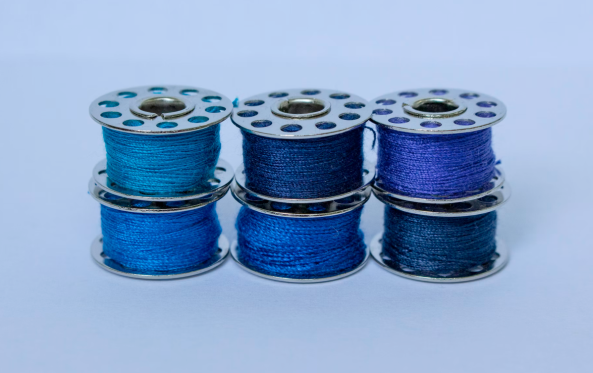
13th edition of Refashion Innovation Challenge
Refashion's Innovation Challenge is back for its 13th edition! Find out more about the call for R&D projects and how to apply!

Refashion's Innovation Challenge is back for its 13th edition! Find out more about the call for R&D projects and how to apply!

Pour la 2ème édition de son appel à projets annuel dédié au réemploi, Refashion soutient 35 projets en France métropolitaine et à La Réunion.|Pour la 2ème édition de son appel à projets annuel dédié au réemploi, Refashion soutient 35 projets en France métropolitaine et à La Réunion.
Project developers: Purchasing / Product development / Design / Management CSR Partners: Suppliers
Suppliers are responsible for manufacturing the products or by-products marketed by a company. They therefore play an essential role in reducing the company's environmental footprint. Their implication within the environmental initiative of their instructing parties, and more precisely within the context of product eco-design efforts, is essential.
In spite of this, brands (even major and proactive brands) can encounter difficulties in giving momentum to sustainable development initiatives with suppliers. To maximise their influence it is possible to intervene with respect to the following factors:
Within this context, the brand can choose to progressively commit its suppliers, firstly with respect to the global improvement of their environmental practices then more gradually within a product eco-design approach, co-developed with the most mature partners at an environmental level.
Complexity of implementation
Estimated economic gain
Human means
Implementation timeframes
Try it! : Follow the sheet step by step and have a go!
Put in place an environmental approach in the supply chain.When starting from zero, it is essential to begin by an inventory of purchases and of suppliers, possibly identifying the suppliers which are already committed to environmental performance actions : % of known production sites and material ennobling sites and where possible, existing environmental guarantees (practices, audits or certifications of ennobling sites with the most impacts), % of ecological materials or components (whatever these attributes are initially).
Ensure that this purchasing review covers at least the 20% of suppliers representing 80% of purchases (Pareto law).For this, it is essential to gain in visibility at the main material manufacturing and ennobling sites, even when these materials are not selected (purchases made are finished products). In effect, fabric converters exclusively responsible for assembling finished products have the lowest environmental impacts.
In order to develop the environmental performances of the supplier panel, it is important to define clear and pragmatic objectives, aligned with the environmental ambitions of the company and which correspond to the maturity and potential of the supplier panel in place. Objectives can concern the environmental certification of sites (See Tool 1), the implementation of specific pro-environment actions (See Tool 2) or the supply of more ecological products. These objectives can be discusses beforehand with strategic suppliers to ensure their prior adhesion to the company's initiative.
Once the pluri-annual standards and objectives of the company have been duly communicated to suppliers (example : via their specifications or dedicated communication on CSR policy), progress must be assessed on an annual basis via surveys (dedicated questionnaires), site visits or dedicated audits (See Tool 3).
Looking for new, committed suppliers can also enable the performances of the panel to be improved by progressively replacing the suppliers which do not wish to comply with environmental standards. Monitoring must be formalised via the updating of KPIs in the supply chain and perhaps the realisation of a "classification" of suppliers thanks to certificates, audits, best practices, the desire to commit …
The next stage is to involve the suppliers which are the most "committed" to the eco-design of their products. Given that it is a particularly demanding initiative, it is important to not only carefully choose the products to be eco-designed (See Sheet: Try it!: Setting the framework for the product eco-design initiative) but also to ensure that you are accompanied by the right partners.
As a priority, choose partners for whom you represent a significant volume of business, who want to commit to an environmental initiative and who already have results to their credit in terms of environmental traceability or performance.
Communicate on the eco-design project to suppliers : the stakes, the strategy and your expectations by showing how rising to the eco-design challenge could be beneficial to them (learning new techniques, consolidation of customer / supplier relations, market trends…). The idea is to begin with one or several POC (Proof Of Concept) – or pilot projects – it is important to give partners a good visibility in order to secure their involvement.
Establish a partnership with one or several suppliers around a range or a capsule collection and jointly draft the specifications to avoid losing the thread. Initially it can be preferable for this range to be composed of simple and permanent products in order to ensure that the efforts made are measured and that the results achieved together will last for more than one season.
Accompany suppliers as regards their potential difficulties and commit to a purchase volume to cover the investments made where needs be. It is essential to visit supplier sites in order to improve the quality of exchanges and accompany the supplier in the initiative.
Similarly, jointly test the products as they are produced to ensure that they correspond to the requirements formulated and involve partners in any corrective measures where needs be.
Give feedback on the project, including the industrial and commercial dimensions (the commercial success of the product developed will also depend on the quality of your cooperation with your partners and the quality of the communication around the product to the consumer).
Renew orders with the supplier to stabilise the process before introducing the operation with other suppliers, taking account of the successes and failures of the actions undertaken previously.
Share lessons learnt from the experiment internally and with suppliers. When specifications are updated at the start of the season, progressively integrate the new eco-design standards that suppliers will need to respect. Examples : traceability, alternative materials, product sustainability, eco-efficiency of processes (fall in production offcuts, reduction of incomings), management of flows etc.
% of suppliers assessed on an environmental level
% eco-responsible material suppliers / ennobling sites (i.e. with certification, checks or other environmental guarantees)
% of products from eco-responsible sites
Savings made thanks to eco-design measures
% of suppliers committed to the eco-design initiative
Turnover of eco-designed products
It is important that purchasing conditions encourage the investment of suppliers and permit progress made to be continued on a long-term basis.
Example : stability of the supplier panel, visibility and business volume suffice to accompany the investments made by suppliers, adapted payment schedules etc.
Tool 1: List of reference standards for the sites
Tool 2 : Environmental standards for the supply chain - GSCP Environmental Reference Requirements
Tool 3 : Assessment and development of supplier environmental performance - GSCP Environmental Implementation Guidelines
Tool 4 : Selection of ennobling sites - NRDC

See the video of the Au Juste brand on the Nikita pullover.

Eco-designing an affordable product

Zero waste, recycling and water conservation